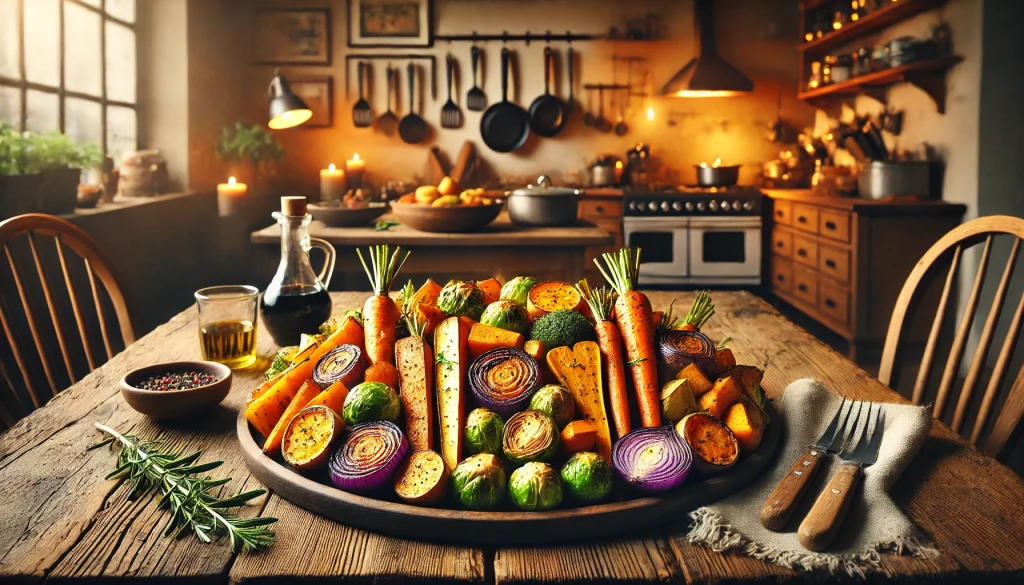
If you’re craving something hearty, colorful, and soul-warming when the weather turns cold, this Slow Roasted Winter Vegetables recipe is exactly what you want. It takes humble root vegetables and brassicas, layers them with aromatics, and slowly roasts them until their natural sugars caramelize into deep, earthy sweetness. The result is a tray of tender, golden, slightly crisp vegetables that can serve as a comforting side or even a main for plant-based eaters. Let’s break it down step by step.
Ingredients
Root Vegetables (4 cups total, peeled and cut into chunks)
Carrots
Parsnips
Sweet potatoes
Turnips
Brassicas (2 cups total, trimmed)
Brussels sprouts (halved)
Cauliflower florets
Alliums
1 large red onion, cut into wedges
6 garlic cloves, peeled and lightly crushed
Seasoning & Flavor
3 tbsp olive oil
2 tsp sea salt (adjust to taste)
1 tsp freshly ground black pepper
2 tsp fresh thyme leaves (or 1 tsp dried)
1 tsp rosemary, finely chopped
½ tsp smoked paprika (optional for depth)
Finish
A drizzle of good balsamic vinegar or honey before serving
Fresh parsley, chopped
Method
Preheat & Prep
Heat oven to 325°F (160°C). Line a large baking tray with parchment. Lower temperature is key here — it allows the vegetables to slowly cook through while developing a sweet, caramelized exterior without burning.Cut Evenly
Slice all vegetables into similar-sized chunks. This ensures everything cooks at the same pace. Aim for 1-inch pieces.Season Well
In a large bowl, toss vegetables with olive oil, salt, pepper, thyme, rosemary, and paprika. Massage the oil into the veg — coating every surface is what helps them roast, not steam.Slow Roast
Spread vegetables in a single layer on the tray, leaving space between pieces (crowding traps steam). Roast for 75–90 minutes, flipping halfway. You’re looking for golden edges and tender centers.Final Touch
In the last 10 minutes, drizzle a little balsamic vinegar or honey for a glossy glaze that enhances sweetness. Scatter fresh parsley before serving.
Tips from the Kitchen
Don’t Rush: The beauty of slow roasting is patience. Resist cranking up the heat; lower and slower gives more flavor.
Oil Balance: Too little and the veg dries out, too much and they go greasy. Three tablespoons per tray is usually perfect.
Pan Choice: A heavy baking sheet or roasting pan holds and distributes heat better than a flimsy tray.
Check Doneness: Use a fork to pierce the thickest piece. If it slides in easily and the edges are browned, you’re there.
Variations
Mediterranean Twist: Add olives, sundried tomatoes, and a sprinkle of feta right before serving.
Spiced Heat: Toss with cumin, coriander, and chili flakes for a warming kick.
Sweet & Savory: Add cubed apples or pears halfway through roasting for contrast.
Make it a Meal: Toss roasted vegetables with quinoa or farro, top with toasted nuts, and serve as a hearty vegetarian bowl.
Serving Suggestions
These vegetables pair beautifully with roasted chicken, grilled salmon, or a holiday roast. They also shine on their own, especially when served with a dollop of Greek yogurt or a drizzle of tahini sauce.